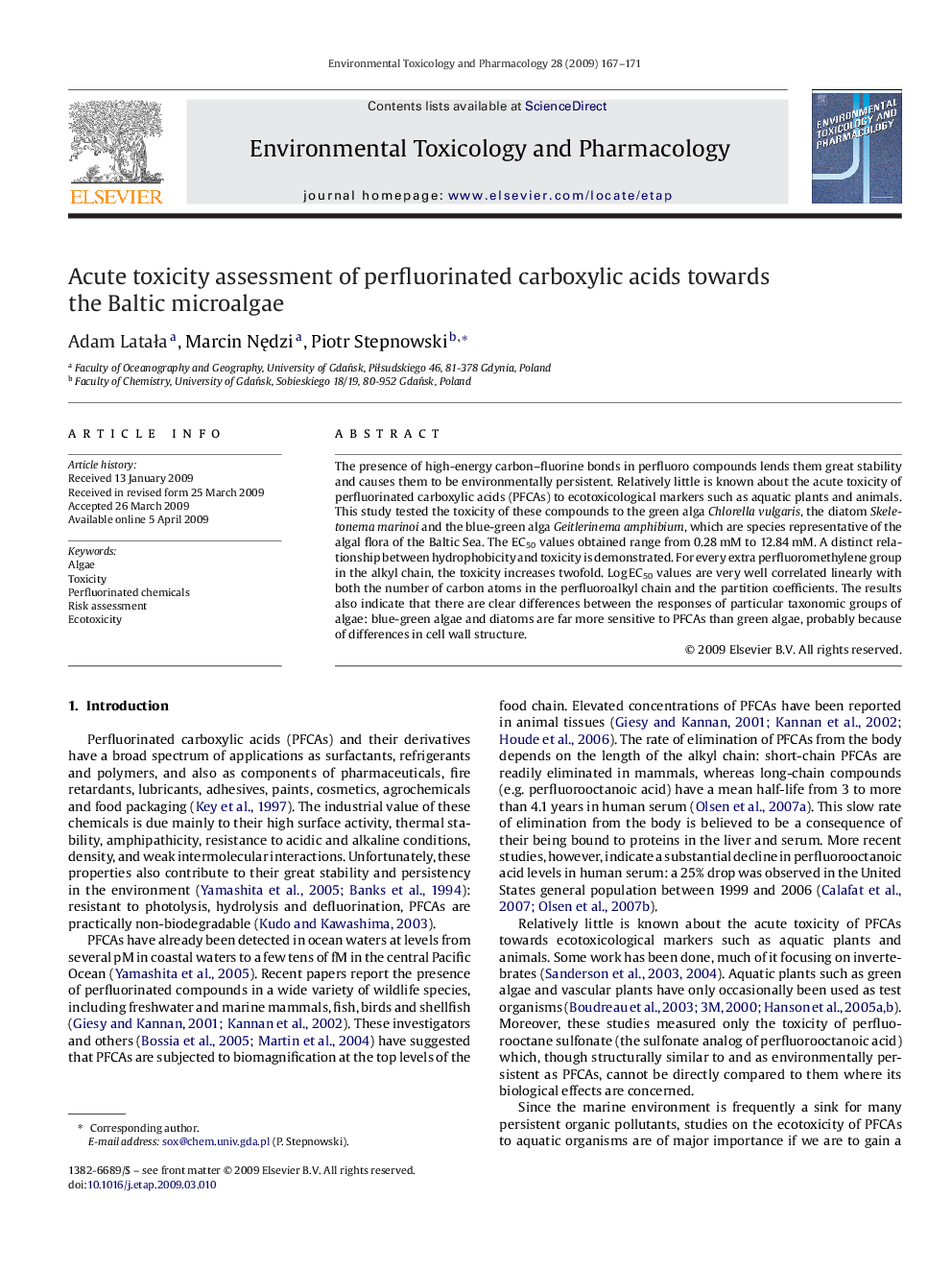| Article ID | Journal | Published Year | Pages | File Type |
|---|---|---|---|---|
| 2584289 | Environmental Toxicology and Pharmacology | 2009 | 5 Pages |
The presence of high-energy carbon–fluorine bonds in perfluoro compounds lends them great stability and causes them to be environmentally persistent. Relatively little is known about the acute toxicity of perfluorinated carboxylic acids (PFCAs) to ecotoxicological markers such as aquatic plants and animals. This study tested the toxicity of these compounds to the green alga Chlorella vulgaris, the diatom Skeletonema marinoi and the blue-green alga Geitlerinema amphibium, which are species representative of the algal flora of the Baltic Sea. The EC50 values obtained range from 0.28 mM to 12.84 mM. A distinct relationship between hydrophobicity and toxicity is demonstrated. For every extra perfluoromethylene group in the alkyl chain, the toxicity increases twofold. Log EC50 values are very well correlated linearly with both the number of carbon atoms in the perfluoroalkyl chain and the partition coefficients. The results also indicate that there are clear differences between the responses of particular taxonomic groups of algae: blue-green algae and diatoms are far more sensitive to PFCAs than green algae, probably because of differences in cell wall structure.
